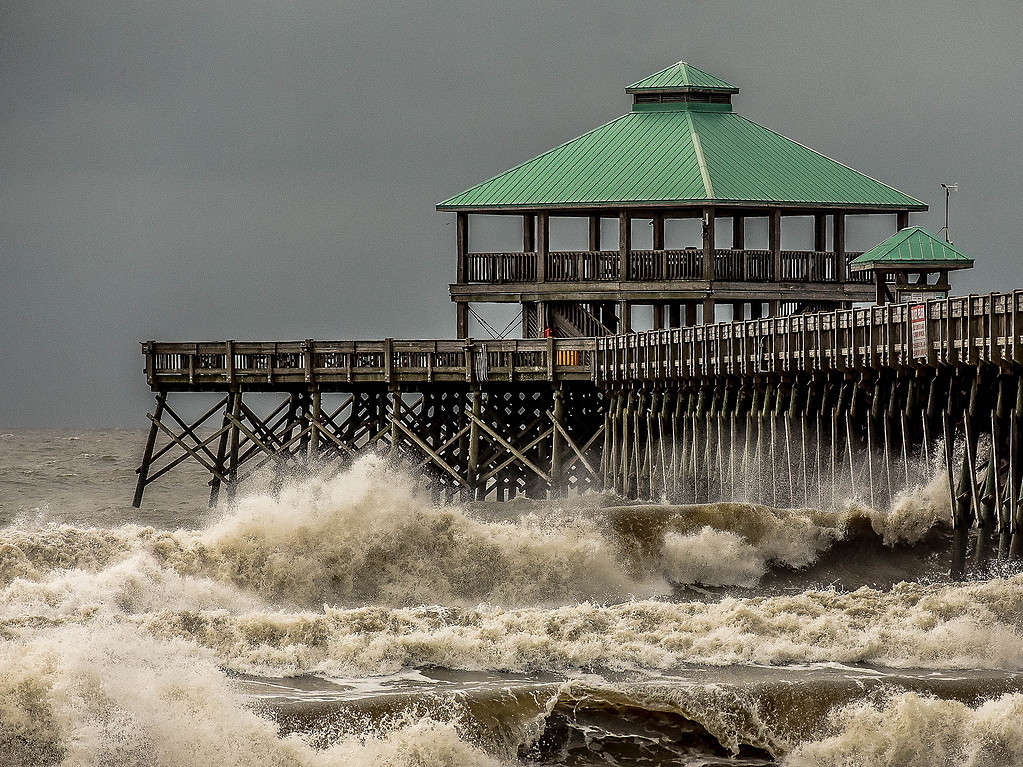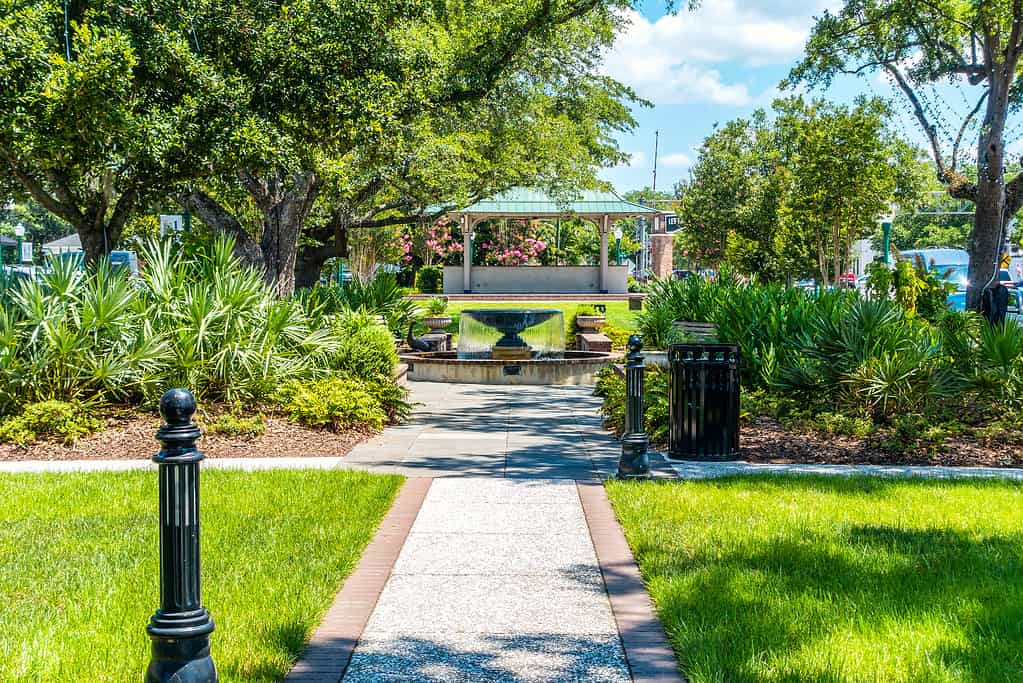South Carolina is known for its rich and complex history, amazing beaches, and low-country cuisine. The Palmetto State has also suffered its fair share of natural disasters over the years. While severe storms, hurricanes, and cyclones rank as the most common disasters, the state also experiences a significant number of earthquakes. In fact, South Carolina ranks as the most seismically active state on the eastern coast of the United States. That said, which town in the state ranks as the most seismically active? Keep reading to discover the South Carolina town most likely to experience an earthquake.
Fault Lines in South Carolina
According to seismologists, South Carolina records between 10 and 20 earthquakes each year. However, of this number, only 3 to 5 are ever noticed or felt by people. Earthquakes in South Carolina often happen in clusters, wherein several earthquakes will take place over the course of just a few days. Most earthquakes worldwide occur near plate boundaries. The vast majority of earthquakes in the state (around 70%) originate in the Middleton Place-Summerville Seismic Zone. Located around 12.4 miles northwest of Charleston, this seismic zone is the source of most of the strongest earthquake activity in the state. Residents of Charleston, Berkeley, and Dorchester counties are the ones most likely to experience earthquakes that occur within the zone.
Most earthquakes occur near the boundary of tectonic plates. These areas, such as the west coast of the United States, typically experience the most frequent and violent earthquakes worldwide. However, unlike most earthquake-prone zones, South Carolina does not lie near a plate boundary. This means that most earthquakes in the state occur within a plate rather than along a plate boundary. Known as intraplate earthquakes, these earthquakes typically occur as a result of geological stress along ancient plate boundaries or fault lines. While relatively rare, intraplate earthquakes can generate more seismic activity than interplate earthquakes (earthquakes that occur between two different plates) of a similar magnitude. This – coupled with the fact that intraplate earthquakes often occur in areas where buildings receive less earthquake retrofitting – means intraplate earthquakes can cause a significant amount of damage.
Natural Disasters in South Carolina

South Carolina is no stranger to natural disasters, experiencing 41 major and emergency declarations since 1954.
©iStock.com/Prentiss Findlay
Due to its location, South Carolina can experience several types of natural disasters. Since 1954, the state has had 41 major and emergency disaster declarations. By far, the most common disasters in the state include tropical storms, cyclones, and hurricanes. Wildfires, floods, heatwaves, and landslides also occur regularly, while ice storms, earthquakes, and tsunamis occur with less frequency.
Throughout its history, several catastrophic hurricanes have rocked the Palmetto State. Arguably the worst hurricane in South Carolina history occurred in the final days of August 1893. The Sea Islands Hurricane caused storm surges over 15 feet high and devastated the coast of South Carolina. According to some estimates, anywhere from 1,000 to 2,000 people died due to the storm. More recently, Hurricane Hugo in September 1989 caused incredible devastation along the South Carolina coastline. The storm generated winds up to 140 miles per hour and caused the deaths of at least 27 people.
The 1886 Charleston earthquake ranks as the most destructive earthquake in South Carolina’s history. Moreover, it also ranks as the strongest earthquake ever recorded on the east coast of the United States. On August 31, 1886, a 6.9 to 7.3 earthquake magnitude earthquake occurred around Charleston, South Carolina. The earthquake caused 60 deaths and between $5 and $6 million in property damage. People felt the earthquake as far away as Boston, Chicago, and Bermuda, which just goes to show the sheer power of this earthquake.
1. Town Most Likely to Experience an Earthquake in South Carolina

Summerville ranks as the town most likely to experience an earthquake in South Carolina.
©iStock.com/gmc3101
Summerville ranks as the town most likely to experience an earthquake in South Carolina. Part of the Charleston-North Charleston-Summerville Metropolitan Statistical Area, Summerville encompasses parts of Dorchester, Berkeley, and Charleston counties. This city of 50,915 people as of the 2020 census is located roughly 24 miles northwest of downtown Charleston.
Summerville earns the top spot in terms of earthquake risk in South Carolina based on its earthquake index score of 10.82. An earthquake index score is a numerical value used to represent the risk earthquakes pose to a specific area. While relatively high for the state of South Carolina, Summerville’s score pales in comparison to some other towns in the United States. For example, Howardville, Missouri, records an earthquake index score of 134.04, while McGee Creek, California, records a score of 167.67.
History of Summerville
European colonists first started settling in the area known as Summerville after the American Revolutionary War. Back then, the community went by the name Pineland Village. Plantation owners who wanted to escape Charleston’s seasonal problems with disease and insects slowly developed the area over the next few decades.
Summerville was officially incorporated as a town on December 17, 1847. The city’s motto, “The Flower Town in the Pines,” stems from the city’s popularity as a tourist destination. Beginning in the early 1900s, visitors would flock to the town in spring to enjoy the town’s spring blossoms. Additionally, the town enacted a ban on logging way back in 1847, making it the first town in the U.S. to enact such legislation.
The 1886 Charleston earthquake devastated the town, but it recovered thanks to some timely support. This support came on the heels of the International Congress of Physicians declaring Summerville as one of the best places in the world to recover from and treat lung disorders. This belief stemmed from Summerville’s dry, sandy climate and a plethora of pine trees. Pine trees release turpentine, which physicians at the time believed could help heal throat and lung disorders. The town built inns and hotels to accommodate visitors, and a whole industry was built to support people who came to the town for rest and relaxation. Over time, many visitors ended up staying in the town, thereby growing its population and economy.
Wildlife Around Summerville
The greater Charleston area (including Summerville) is mostly known for its architecture, food, and history. However, the area also features numerous parks, forests, and other natural environments. These areas support a diverse array of plants and animals. Commonly-seen wildlife in the area includes deer, foxes, skunks, opossums, and bats. Just off the coast, you can also encounter whales, dolphins, and manatees, as well as numerous fish species.
How Do Earthquakes Impact Wildlife?

Earthquakes can severely impact wildlife, including affecting whales’ ability to find food.
©iStock.com/Grilleau Nicolas
Like any natural disaster, earthquakes possess the potential to change the local landscape drastically. For example, earthquakes can cause landslides, which can destroy burrows and nests for various animals, including rabbits, birds, snakes, and rodents. Additionally, earthquakes can also affect food chains for various species. Evidence for this theory comes from research done on the effects of earthquakes on whales and other large marine mammals. In 2016, an earthquake near New Zealand wiped out invertebrate lifeforms near the sea floor in the area around the islands. This forced whales in the region to dive much deeper to find food and reduced their ability to feed.
What to Do in an Earthquake
If you are in an earthquake in South Carolina, just remember these words: Drop, Cover, and Hold. The first thing you should do in an earthquake is to drop onto your hands and knees. This allows you better movement and also removes the risk of you falling and injuring yourself. Next, cover your head and neck underneath a sturdy piece of furniture, such as a table or desk. If possible, try to cover your whole body from any falling debris. Next, hold on to your shelter and stay in place until any tremors subside. That said, if the tremors do not abate after a minute, attempt to evacuate your residence and head to the highest ground you can find away from the coast. The farther inland you can get, the better. This step is especially necessary if you live in an area prone to tsunamis.
Where is Summerville Located on a Map?
Summerville encompasses parts of Dorchester, Berkeley, and Charleston counties. This city of more than 50,000 people is located roughly 24 miles northwest of downtown Charleston. It is, of course, located within the Middleton Place-Summerville Seismic Zone. It’s first settlement began after the American Revolutionary War.
The photo featured at the top of this post is © iStock.com/digidreamgrafix
Thank you for reading! Have some feedback for us? Contact the AZ Animals editorial team.






